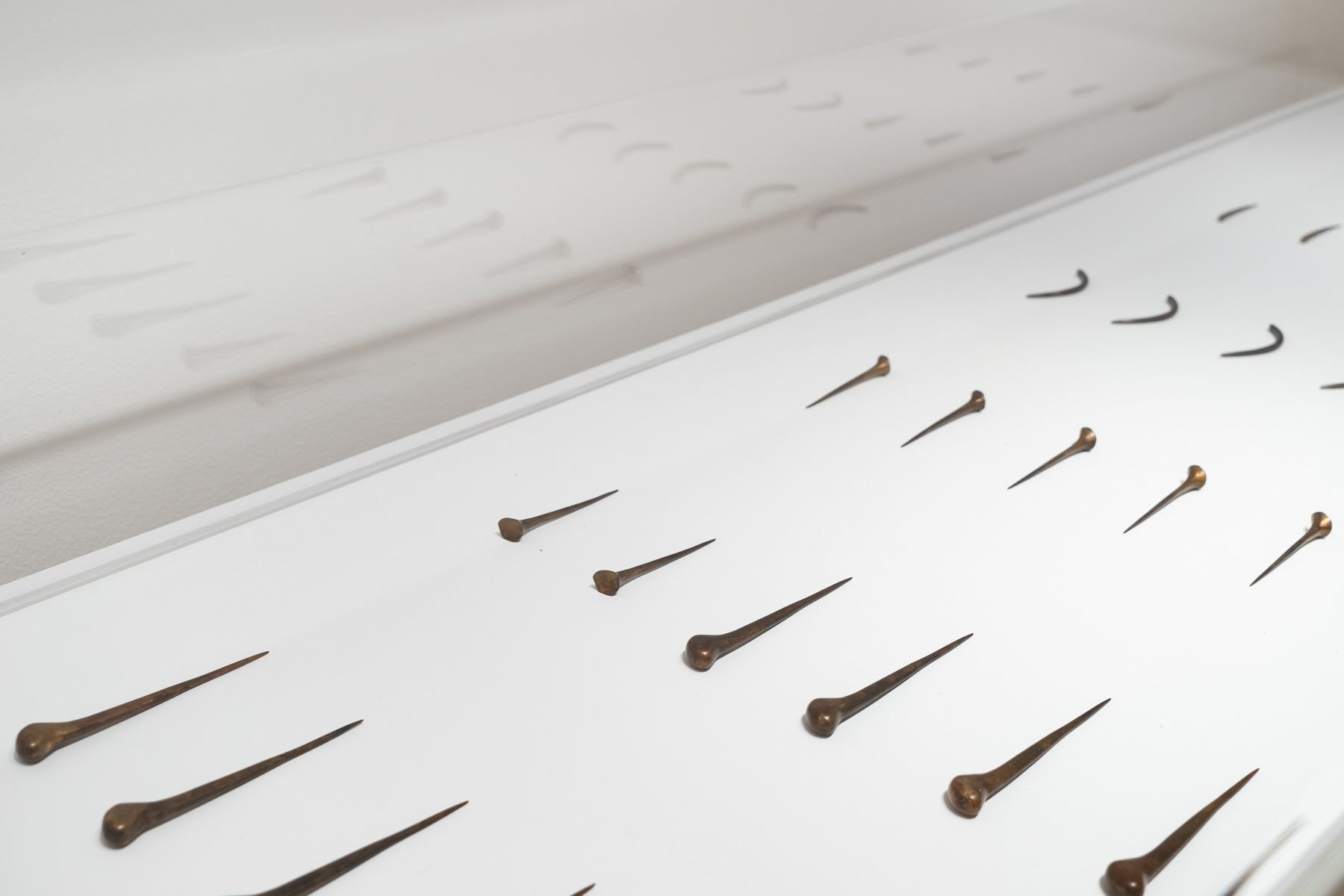Audio descriptions: Artworks in the exhibition Looking Glass: Judy Watson and Yhonnie Scarce

Judy WATSON resistance pins (detail) 2018, cast bronze with patina finish, dimensions variable. Courtesy of the artist and Milani Gallery, Brisbane. Photo by Louis Lim.
resistance pins by Judy Watson, 2018.
This work consists of 42 thin pointed pieces of cast bronze, referred to as pins. Each has a brown patina which is the chemical reaction on the metal and is roughly 10-20 centimetres long. The pins are laid flat in a display case with an acrylic lid set upon a white background. The pins are positioned in seven vertical columns in relatively equal distance from one another. From left to right each column contains six similarly shaped pins lying horizontally; a total of 42 pins.
The pins in the first column on the left are shaped like thick sewing needles with the sharp end pointing to the right. The pins in each column come in various shapes and all are long and thin. The pins in columns two and three resemble nails; some with a flat head, others with a rounded head moving towards an elongated, sharpened tip reminiscent of an ice pick. Interestingly, all of the pins face left to right in the display case, with the thick end on the left-hand side, except for the fourth column where the pins face back into the centre and seem to aptly embody the criteria of the work’s title, resisting their placement of left to right and pushing back towards the centre of the work. These pins have a trumpet like end and the artist describes these as “ornamental and utilitarian, for wearing on the body.”
A single pin would sit comfortably in your hand and be smooth and cool to touch. The pins in column five and the bottom three pins in column six are the shape of a semi-circle and more closely resemble curved bones. The variously shaped pins also reference awls. Awls can be compared to small metal tools and in this instance were the tools once employed in the Kowanyama area of Queensland to pull apart the fruit of the Pandanus tree. All of the pins have a brown polished film on their surface and underneath a golden bronze finish, produced by the oxidation process and alluding to the passage of time in the life of these objects. The artist provides the following description:
“Aesthetically beautiful, the sculptural forms of the resistance pins reference Aboriginal Australian awls, (needles), cloak, nose and ear pins, digging sticks and artisans’ tools...Their elegant, slender shapes conceal their ability to bind and sew, drill and pierce through material and the body, dig into the earth, fight, resist an attack or knock over a catch of fresh food.”
The artist’s research of cultural sites, archives and collective memory creates a practice of resistance. When categorised and displayed collectively under an acrylic display cabinet and under scrutiny, these small and beautiful objects can be seen as symbolic of resistance against the impact of colonial history and the institutional discrimination of Aboriginal people.
Judy Watson is an Aboriginal artist living in Brisbane. Watson’s matrilineal family are Waanyi, whose Country is located in north-west Queensland.

